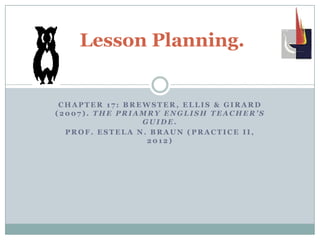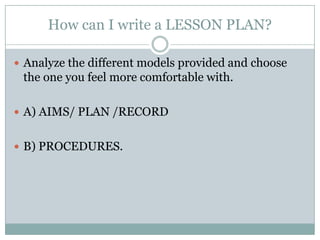The document discusses the importance of effective lesson planning, outlining elements such as clear objectives, a variety of activities and catering to different learning styles. It also covers the structure of a lesson, including beginning, middle and end, as well as selecting and sequencing activities appropriately. Teachers are advised to evaluate their lessons to improve their planning and teaching skills over time.





















